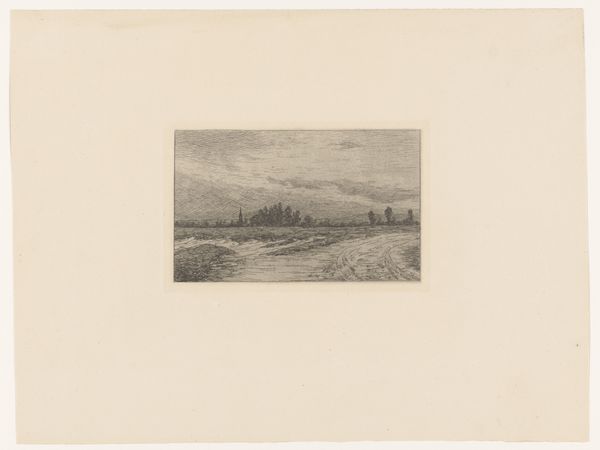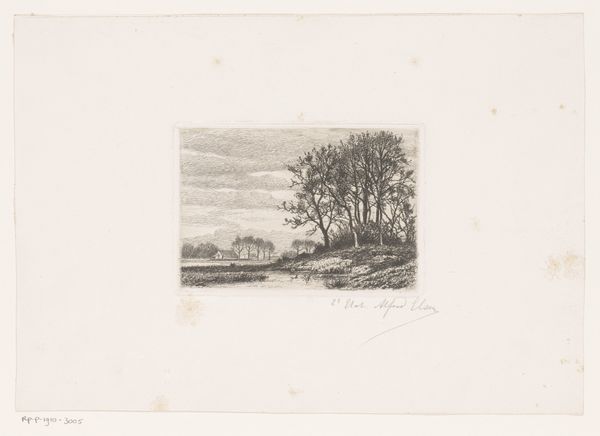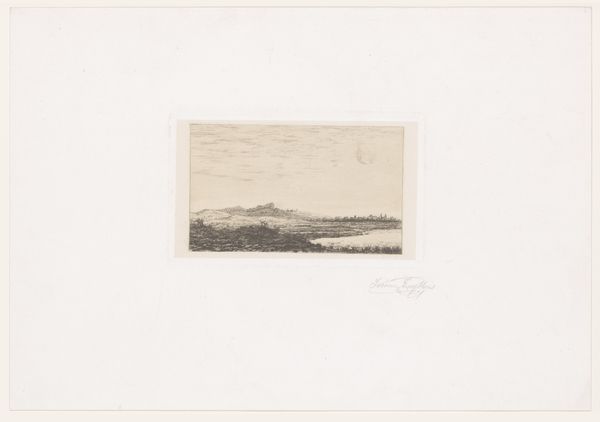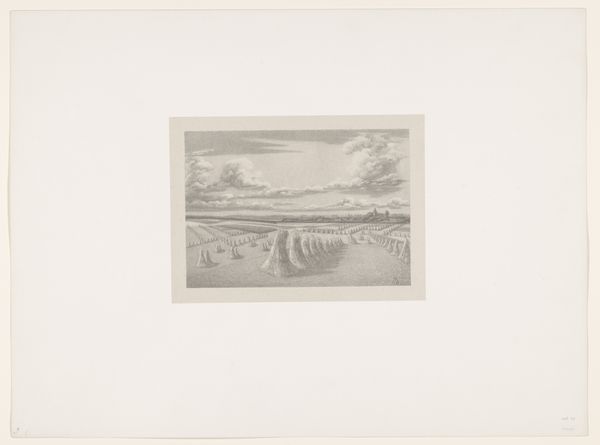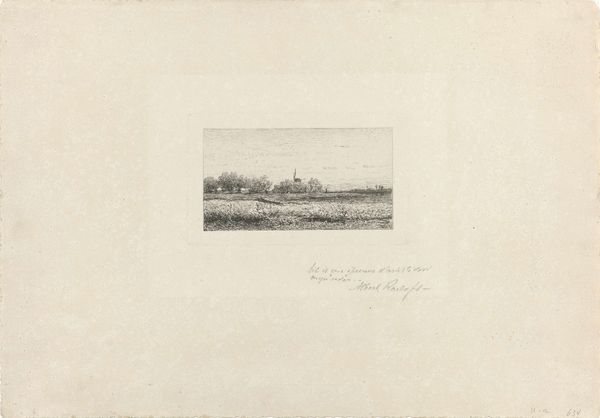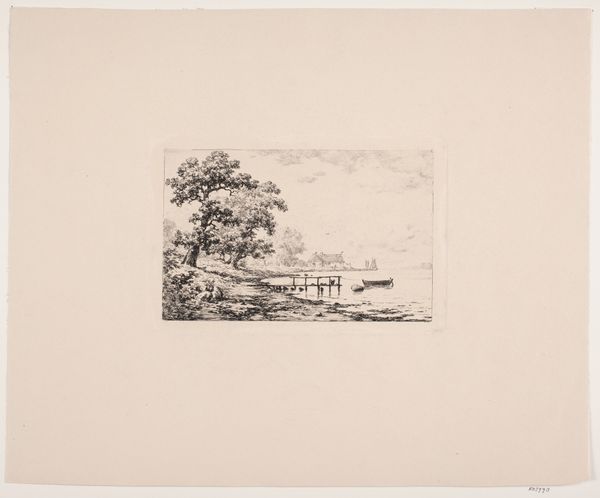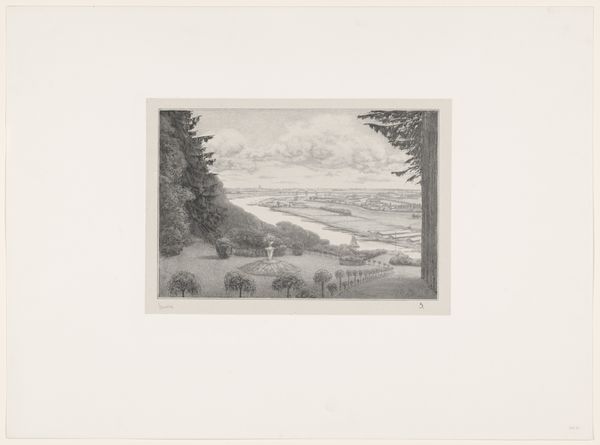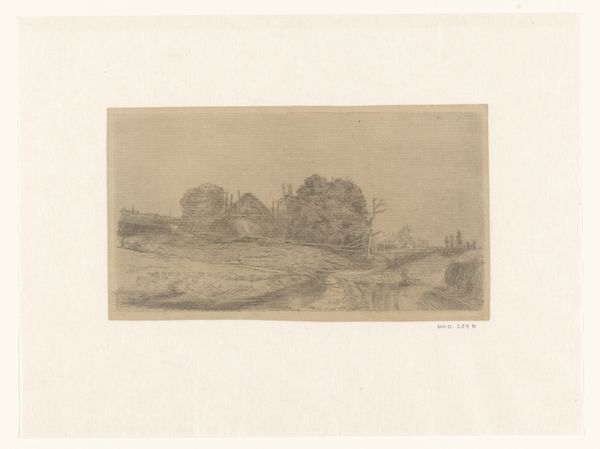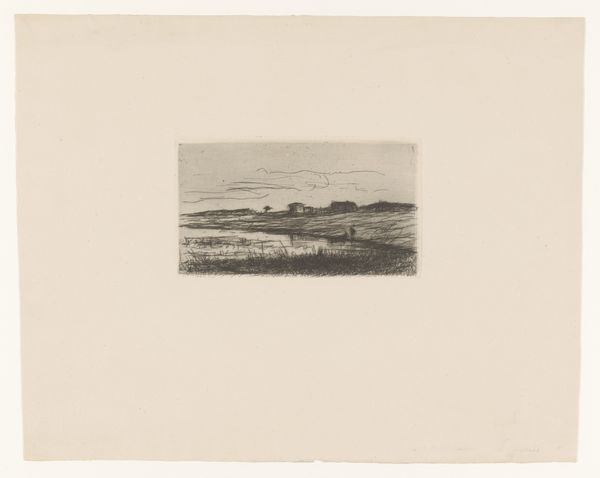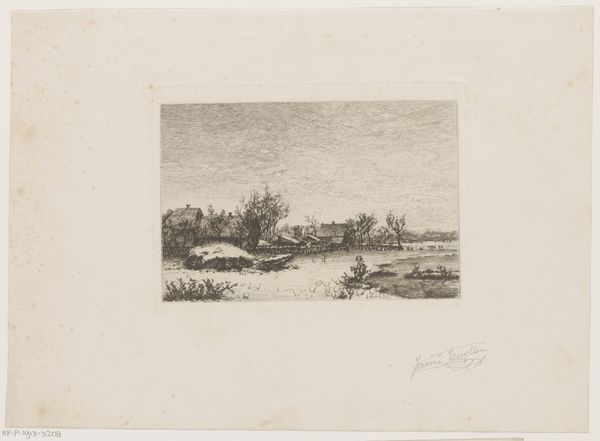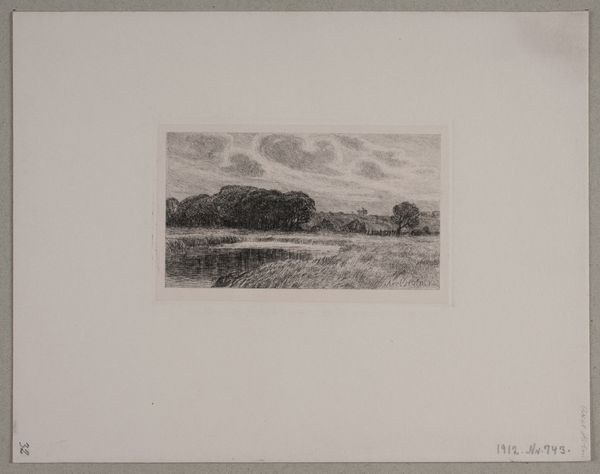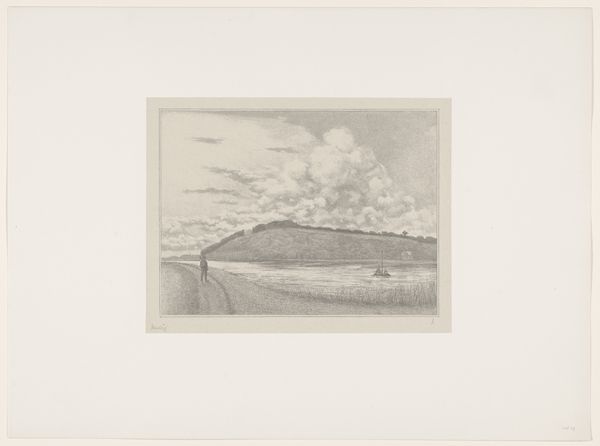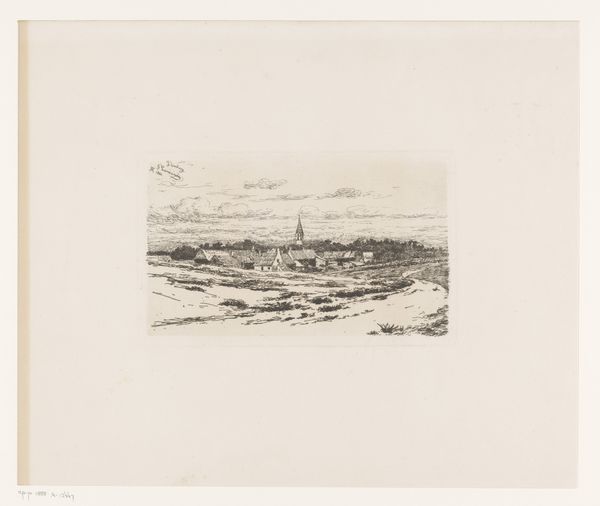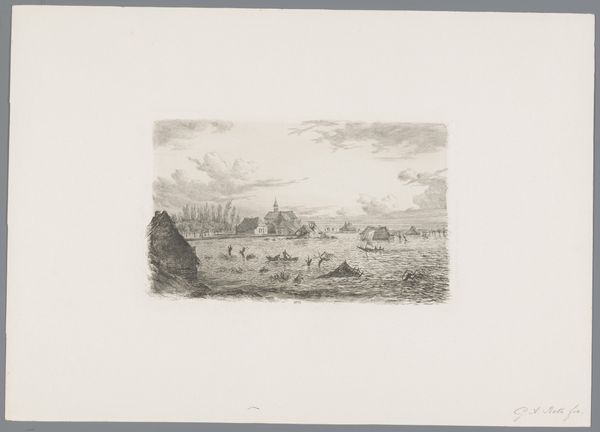
print, etching
# print
#
impressionism
#
etching
#
landscape
Dimensions: 116 mm (height) x 220 mm (width) (plademål)
Curator: Looking at "Gyrstinge Sø" by Louise Ravn-Hansen from 1882, an etching currently held at the SMK, what are your immediate thoughts? Editor: Ah, it feels like a stolen glance, doesn't it? So fleeting and still at the same time. The water seems to hold its breath and the trees... They're like whispers in the distance. Melancholy maybe, or just peaceful. What do you see in it? Curator: What I see is how it subtly reflects broader currents. This landscape, seemingly simple, exists within a very specific artistic and socio-political milieu. We see in Impressionism a movement questioning academic tradition, turning to nature and everyday life. Further, what does it mean to depict the Danish landscape at this particular historical juncture? Editor: I suppose, when you look at it that way... It’s interesting you frame it like that, against "tradition," because that stillness I feel in it, it kind of resists tradition, doesn't it? There's no grand statement here. I almost want to jump into it; run around it and make a splash! How do the impressions relate to the time period itself? Curator: The landscape here, Gyrstinge Lake, isn't just a backdrop but a reflection of cultural identity and national romanticism prevalent in 19th-century Denmark. There were shifts in land ownership. So, whose gaze are we adopting when looking at this seemingly untouched landscape? Also, what does it mean for a woman artist, Louise Ravn-Hansen, to participate in this traditionally male domain of landscape painting and printmaking? Editor: Yes! The gaze! That's what's so subtle, I think. It's so cool when things aren’t so obviously "there," if that makes any sense. Makes me wonder if that stealing away sensation has some of that "untouched landscape" romanticism that’s kind of tongue in cheek by today's standards? Curator: Precisely. The beauty lies not only in the aesthetics but also in unraveling its complexities. This piece acts as a touchpoint to think about the ways we've inherited seeing and depicting land, ownership, and gender. Editor: And it looks so unassuming. You’d have no idea! Well, I for one am adding that to the list. "Don’t judge an etching by its landscape."
Comments
No comments
Be the first to comment and join the conversation on the ultimate creative platform.
